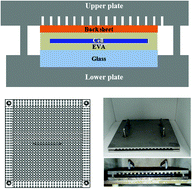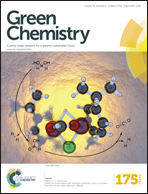An eco-friendly method for reclaimed silicon wafers from a photovoltaic module: from separation to cell fabrication
Abstract
A sustainable method for reclaiming silicon (Si) wafers from an end-of-life photovoltaic module is examined in this paper. A thermal process was employed to remove ethylene vinyl acetate and the back-sheet. We found that a ramp-up rate of 15 °C min−1 and an annealing temperature of 480 °C enabled recovery of the undamaged wafer from the module. An ecofriendly process to remove impurities from the cell surface was developed. We also developed an etching process that precludes the use of hydrofluoric (HF) acid. The method for removing impurities consists of three steps: (1) recovery of the silver (Ag) electrode using nitric acid (HNO3); (2) mechanical removal of the anti-reflecting coating, emitter layer, and p–n junction simultaneously; and (3) removal of the aluminum (Al) electrode using potassium hydroxide (KOH). The reclaimed wafers showed properties that are almost identical to those of commercial virgin wafers: 180 μm average thickness; 0.5 and 3.7 Ω cm minimum and maximum resistivities, respectively; and 1.69 μs average carrier lifetime. In addition, cells fabricated with the reclaimed wafers showed an efficiency equivalent to that of the initial cells.


 Please wait while we load your content...
Please wait while we load your content...